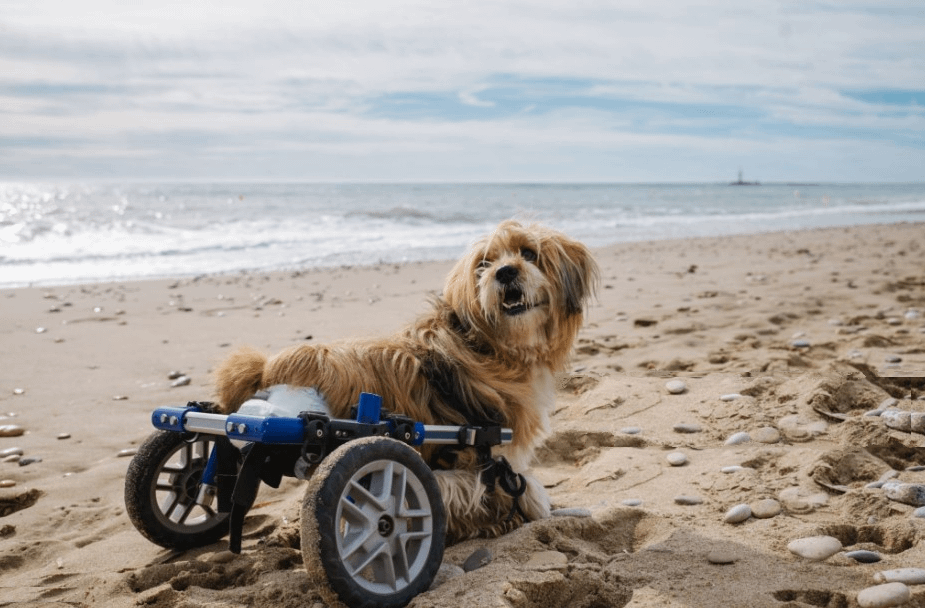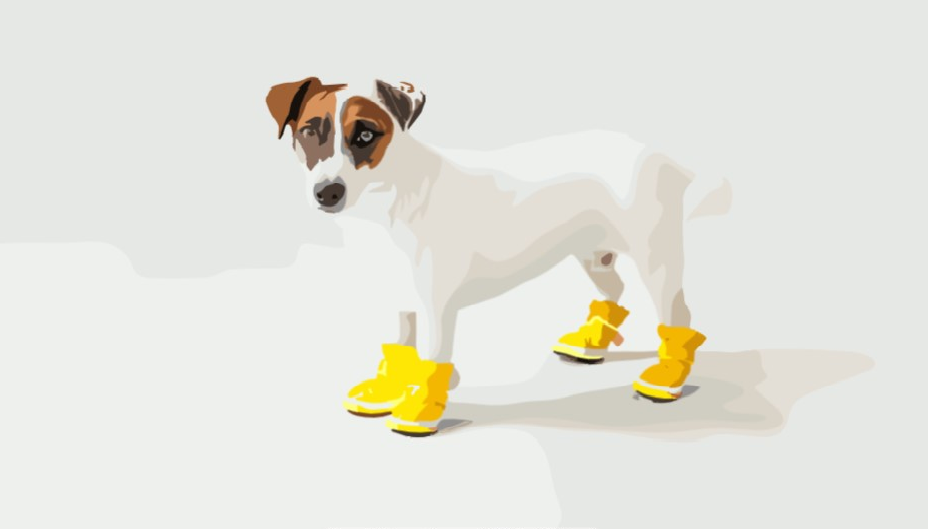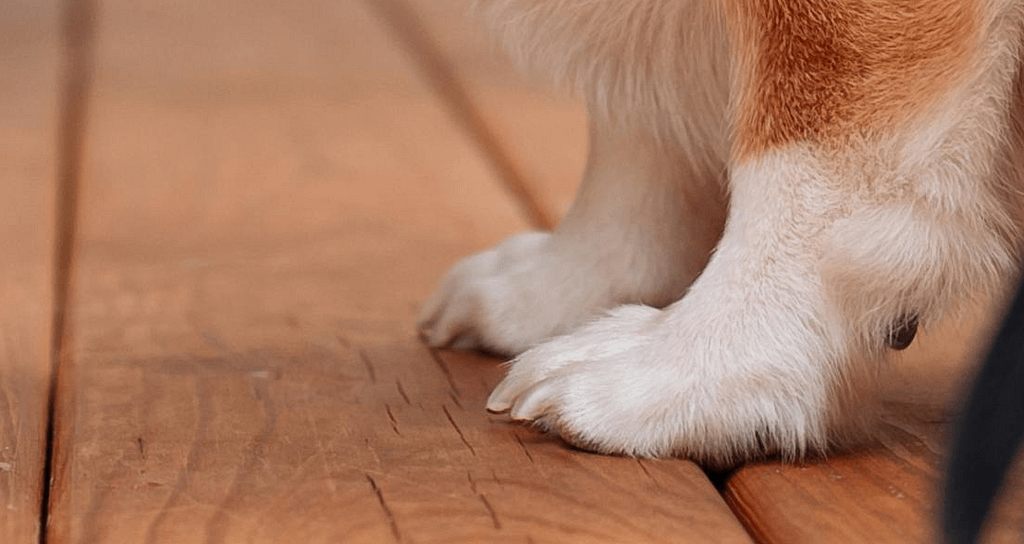Dog Wheelchair For Back Legs
 When a dog faces back leg mobility issues, life can feel pretty different both for them and their human pals. Health problems like spinal injuries, arthritis, or congenital disorders might be handy culprits causing these struggles. It can be tough, but recognizing these challenges is the first step towards making life way better for your furry buddy.
When a dog faces back leg mobility issues, life can feel pretty different both for them and their human pals. Health problems like spinal injuries, arthritis, or congenital disorders might be handy culprits causing these struggles. It can be tough, but recognizing these challenges is the first step towards making life way better for your furry buddy.
Dog wheelchairs can be game-changers. Picture this: your pup back to exploring the backyard or joining the fam for strolls again. These wheelchairs basically add wheels to your dog’s back legs, making mobility a breeze. It’s all about giving them the freedom they deserve and turning hard days into easier ones.
Spotting the need for a wheelchair isn’t rocket science, but it does call for some keen observation. You might notice your dog dragging their hind legs, wobbling, or just not as eager to join in usual fun activities. If it feels like something’s off, it probably is. Don’t ignore those signs, and a good chat with a vet can offer loads of insight and direction.
Understanding when and why a dog might need a wheelchair isn’t just pet-owner know-how—it’s a way to ensure your pup’s wellbeing and happiness. This is where expert advice comes in clutch. Vets or even folks who have been in those shoes know exactly what steps to take. They can help plan out a routine that involves adding wheels in the right measure.
Choosing the Right Dog Wheelchair: Factors to Consider

A snug fit is important for your dog’s comfort. The right wheelchair reduces the strain on their back and legs, letting them move with ease. So, if the fit is just a bit off, it might not work as effectively. It’s like wearing shoes that don’t fit—they might do more harm than good.
Let’s chat about materials. Thinking about durability and comfort plays a part in your decision-making. You want materials sturdy enough to withstand your dog’s zest for life, yet comfy enough to keep them happy on their adventures. Think lightweight but strong, as you don’t want your pet feeling bogged down by their mobility aid.
Get help from the pros. Vets and pet mobility experts have a ton of experience with different dog breeds and conditions. They know what to look out for so that your dog gets a wheelchair that’s tailor-made for them. Relying on expert input ensures you’re not missing out on something important.
Factor in future needs as well. As your dog ages or if their condition changes, you might need to make alterations. Choosing a wheelchair that easily adjusts can save you hassles down the road, keeping your dog comfortable for the long haul.
Integrating Dog Shoes for Enhanced Mobility and Protection

When picking out footwear, think about where your adventures take you. If it’s the park with muddy puddles or sunny sidewalks, you need shoes that can handle the trip. The right shoes prevent injuries from sharp objects or rough terrain.
Comfort is key to avoid any paw problems. You wouldn’t want to walk around in uncomfortable shoes, so don’t settle for anything less for your dog. Look for features like breathable material and sturdy soles.
Getting the right fit is essential, just like it is with the wheelchair. A poorly fitting shoe can cause blisters or chafing—ouch—not fun for anyone. Measure those paws and maybe even test out a few pairs to see what fits the best.
Vets have insights into what your dog’s paws specifically need. Consulting a vet can save time and ensure you’re picking out the perfect set. They might even help in choosing between open-toed or closed-toed options based on your dog’s health condition.
Consider seasons and weather. Dog shoes with good insulation can keep paws warm during those chilly morning walks. In the summer, shoes can protect dog paws from hot pavements.
Combining the right footwear with a wheelchair means double the care for your pup. Paw health matters just as much as getting around does. Happy paws equal a happy, mobile dog.
Care and Servicing: Ensuring Longevity Comfort and Joy

You might want to clean and replace parts as necessary. Mud, dirt, or fur can clog the wheels, while salty water from winter sidewalks could lead to rust if left unchecked. Keeping everything clean ensures smooth operation and a stain-free life for the gear.
Comfort goes a long way in making sure your dog’s eager to use their wheels. Strategies to avoid chafing include adding soft padding where the straps touch your dog’s body. It’s also smart to check for any areas where the wheelchair might be rubbing your dog’s skin.
Building trust and comfort with the wheelchair or shoes involves patience. Some dogs adjust right away, but others need time. Try short, fun sessions first, then gradually increase as your dog gets more comfortable. Personal stories from other pet owners who have gone through the same journey can provide useful tips and reassurance.
Never underestimate the value of expert advice. Vets and pet mobility specialists often have some cool, lesser-known tips for care and maintenance that might just come in handy. They can help tailor a care routine specifically for your dog’s needs.
Ensuring the longevity of the equipment means more joyful adventures with your furry friend. Regular care and attention keep everything running smoothly and help your pet stay active and comfortable for as long as possible.

 Dogs are amazing, they just love outdoor activities as much as we do, but sometimes their behavior puzzles us. Picture this: a dog that just won’t stop barking at everything and everyone. Barking is like their version of texting. They might be hungry, bored, or just saying hello. Investigating what sets them off is key, and a simple routine or some extra outdoor playtime might change everything.
Dogs are amazing, they just love outdoor activities as much as we do, but sometimes their behavior puzzles us. Picture this: a dog that just won’t stop barking at everything and everyone. Barking is like their version of texting. They might be hungry, bored, or just saying hello. Investigating what sets them off is key, and a simple routine or some extra outdoor playtime might change everything. Ever notice your dog limping or constantly licking their paws? Paw problems are more common than you might think, and they can really affect your dog’s quality of life. From dermatitis causing those itchy, irritated spots to full-blown infections, these issues need some attention. Regularly checking their paws for any swelling, redness, or unusual odor is a great start.
Ever notice your dog limping or constantly licking their paws? Paw problems are more common than you might think, and they can really affect your dog’s quality of life. From dermatitis causing those itchy, irritated spots to full-blown infections, these issues need some attention. Regularly checking their paws for any swelling, redness, or unusual odor is a great start. Dog behavior and paw health often go hand in hand, reflecting their overall wellbeing. Imagine a dog with plenty of energy but nowhere to spend it. That might lead to anxious behaviors or even paw problems from too much licking or chewing. Balanced nutrition, daily exercise, and mental enrichment can address a lot of these issues.
Dog behavior and paw health often go hand in hand, reflecting their overall wellbeing. Imagine a dog with plenty of energy but nowhere to spend it. That might lead to anxious behaviors or even paw problems from too much licking or chewing. Balanced nutrition, daily exercise, and mental enrichment can address a lot of these issues.
 Arthritis
Arthritis Dog shoes have come a long way in terms of design and functionality. They’re not just about looking stylish while out and about, but they play a crucial role in protecting those delicate paws, especially from environmental challenges.
Dog shoes have come a long way in terms of design and functionality. They’re not just about looking stylish while out and about, but they play a crucial role in protecting those delicate paws, especially from environmental challenges. When it comes to picking the right dog shoes, a few features make all the difference. Look for shoes with sturdy soles and good traction to keep your furry friend from slipping around, especially if they’re already struggling with arthritis.
When it comes to picking the right dog shoes, a few features make all the difference. Look for shoes with sturdy soles and good traction to keep your furry friend from slipping around, especially if they’re already struggling with arthritis. Hearing directly from other dog owners who’ve been through the same challenges can truly be inspiring. Many have found significant improvements in their dogs’ mobility and mood with the right pair of shoes.
Hearing directly from other dog owners who’ve been through the same challenges can truly be inspiring. Many have found significant improvements in their dogs’ mobility and mood with the right pair of shoes. Dogs love outdoor adventures
Dogs love outdoor adventures Walking can be a slippery affair for senior dogs navigating slick indoor floors. Doggy shoes provide much-needed traction, helping them move confidently without fear of slipping. It’s like giving them a little extra support where it’s needed most.
Walking can be a slippery affair for senior dogs navigating slick indoor floors. Doggy shoes provide much-needed traction, helping them move confidently without fear of slipping. It’s like giving them a little extra support where it’s needed most. If you’re a dog owner, you might often wonder whether your pooch needs that extra layer of protection for their paws during the winter. I’m going to clarify this for you. Dog boots in snowy conditions aren’t always necessary; it really depends on specific conditions and your dog’s needs. Remember, not every glove fits every hand, and the same goes for dogs and their boots.
If you’re a dog owner, you might often wonder whether your pooch needs that extra layer of protection for their paws during the winter. I’m going to clarify this for you. Dog boots in snowy conditions aren’t always necessary; it really depends on specific conditions and your dog’s needs. Remember, not every glove fits every hand, and the same goes for dogs and their boots.
 You’re about to step into a world where you need to match your pup’s boots with the winter wonderland they’ll be exploring. Not one type of dog boot fits all occasions, and that’s going to include what’s best suited for your furry friend’s paws. It’s not just about keeping them warm; it’s about giving them the confidence and protection they need to enjoy their wintertime frolics.
You’re about to step into a world where you need to match your pup’s boots with the winter wonderland they’ll be exploring. Not one type of dog boot fits all occasions, and that’s going to include what’s best suited for your furry friend’s paws. It’s not just about keeping them warm; it’s about giving them the confidence and protection they need to enjoy their wintertime frolics.
 If you’re on the look-out for the perfect pair of shoes for your petite pooch, like my
If you’re on the look-out for the perfect pair of shoes for your petite pooch, like my 
 I’m going to let you in on a little secret: Summer can be tough on our Chihuahua friends. Their tiny paws are sensitive to the hot pavement and rough terrain, which is why finding the right Chihuahua
I’m going to let you in on a little secret: Summer can be tough on our Chihuahua friends. Their tiny paws are sensitive to the hot pavement and rough terrain, which is why finding the right Chihuahua 

 Also, if you’re planning on nature walks or city strolls, you want a sole that can handle those hot Aussie surfaces. Something with a heat-resistant and non-slip sole will protect those paws on both the sandy beaches and the urban sidewalks.
Also, if you’re planning on nature walks or city strolls, you want a sole that can handle those hot Aussie surfaces. Something with a heat-resistant and non-slip sole will protect those paws on both the sandy beaches and the urban sidewalks. When it comes to selecting the right type of footwear, prioritize breathability to prevent overheating and discomfort. Mesh fabrics and lightweight designs that allow air circulation while offering protection from the heat are ideal. Look for soles that provide good grip yet are soft enough to not restrict paw movement.
When it comes to selecting the right type of footwear, prioritize breathability to prevent overheating and discomfort. Mesh fabrics and lightweight designs that allow air circulation while offering protection from the heat are ideal. Look for soles that provide good grip yet are soft enough to not restrict paw movement. If you want to ensure the well-being of large dog breeds like Golden Retrievers, Labradors, Great Danes or Bull Mastiffs, you’re going to have to think about more than just their diet and exercise. Footwear is important, especially if you’re keen on keeping your furry friend’s paws healthy. The two key factors for the large dog breeds shoes are: comfort and size.
If you want to ensure the well-being of large dog breeds like Golden Retrievers, Labradors, Great Danes or Bull Mastiffs, you’re going to have to think about more than just their diet and exercise. Footwear is important, especially if you’re keen on keeping your furry friend’s paws healthy. The two key factors for the large dog breeds shoes are: comfort and size. Think about those chilly winter walks. Large dog breeds, such as Labrador, Retrievers and Great Danes, may have big bodies, but that doesn’t mean they’re immune to the cold. This is where waterproof shoes come in. They’re designed to keep your furry friend’s paws warm and dry, which can be number-one during snowy or rainy walks. I want to highlight that dry paws mean less chance of frostbite or irritation from cold and wet conditions.
Think about those chilly winter walks. Large dog breeds, such as Labrador, Retrievers and Great Danes, may have big bodies, but that doesn’t mean they’re immune to the cold. This is where waterproof shoes come in. They’re designed to keep your furry friend’s paws warm and dry, which can be number-one during snowy or rainy walks. I want to highlight that dry paws mean less chance of frostbite or irritation from cold and wet conditions. You’re going to find out about the need for shoes that can keep up with the high energy of large dog breeds. Just like us, when dogs go out to explore the rough terrains, concrete sidewalks, or even just play in the backyard, they need protection. This isn’t just about safeguarding their paws; it’s also about providing them enough comfort so they can enjoy their adventures without any hindrances.
You’re going to find out about the need for shoes that can keep up with the high energy of large dog breeds. Just like us, when dogs go out to explore the rough terrains, concrete sidewalks, or even just play in the backyard, they need protection. This isn’t just about safeguarding their paws; it’s also about providing them enough comfort so they can enjoy their adventures without any hindrances.
 Exploring why dog shoes are a game-changer for homes with hardwood floors reveals the facts you want to know. Now, you might be thinking, ‘Is this really necessary?’ Trust me, it’s not just about keeping your floors looking sharp; it’s also about your pup’s well-being. Have you ever noticed your four-legged friend slipping or even injuring their paws during an indoor play session? It happens more often than you think.
Exploring why dog shoes are a game-changer for homes with hardwood floors reveals the facts you want to know. Now, you might be thinking, ‘Is this really necessary?’ Trust me, it’s not just about keeping your floors looking sharp; it’s also about your pup’s well-being. Have you ever noticed your four-legged friend slipping or even injuring their paws during an indoor play session? It happens more often than you think.
 I’m going to walk you through the process of picking out
I’m going to walk you through the process of picking out  In my opinion, keeping your hardwood floors in pristine condition while caring for your dog’s well-being can be a balancing act. But with the right strategies and tools, it’s definitely achievable. Remember, your proactive measures go a long way in maintaining the aesthetics and integrity of your floors, as well as in ensuring your dog’s safety and comfort.
In my opinion, keeping your hardwood floors in pristine condition while caring for your dog’s well-being can be a balancing act. But with the right strategies and tools, it’s definitely achievable. Remember, your proactive measures go a long way in maintaining the aesthetics and integrity of your floors, as well as in ensuring your dog’s safety and comfort.